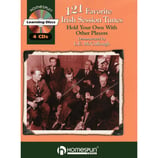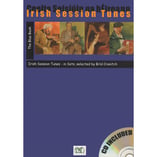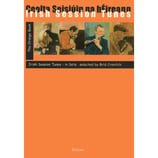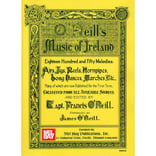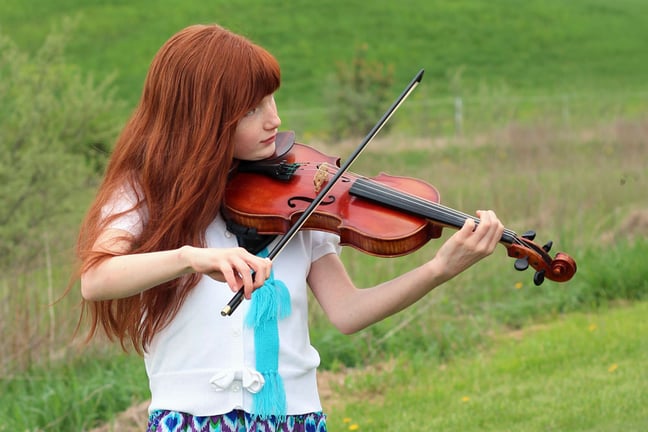 Have you ever been to an Irish pub or special gathering where a small circle of people pulled out their various instruments and just started playing, without pause, energetic and mythical sounding sets of tunes that just turn and turn into the night? The group may be as small as two people, or as large as a small orchestra, and while some people may be close friends, others are total strangers. What they all have in common are their memorization of dozens, sometimes hundreds of tunes, all shared in a common ancestry - not hereditary, but simply musical. If you play a stringed instrument and haven't been a part of what is most often called Irish session music, you absolutely must, and this St. Patrick's Day is a great opportunity. If you are hooked on Celtic fiddling, a tune book and some advice will help you in becoming one of that timeless circle of musicians.
Have you ever been to an Irish pub or special gathering where a small circle of people pulled out their various instruments and just started playing, without pause, energetic and mythical sounding sets of tunes that just turn and turn into the night? The group may be as small as two people, or as large as a small orchestra, and while some people may be close friends, others are total strangers. What they all have in common are their memorization of dozens, sometimes hundreds of tunes, all shared in a common ancestry - not hereditary, but simply musical. If you play a stringed instrument and haven't been a part of what is most often called Irish session music, you absolutely must, and this St. Patrick's Day is a great opportunity. If you are hooked on Celtic fiddling, a tune book and some advice will help you in becoming one of that timeless circle of musicians.
For those unfamiliar, Irish session music today often incorporates a variety of modern, classical, and traditional instruments in any combination. The group plays "sets" of 2-3 traditional tunes that each typically have two sections each (kind of like binary form or verse/chorus). Sometimes groups will continuously string together tunes, with each person in the circle choosing and beginning each tune, and everyone else joining in seamlessly. The most common instruments you see are violin, flute (especially wooden flutes), tin whistle, bodhrán (a type of frame drum played with a mallet called a cipín), Irish bouzouki (an adaptation of a Greek plucked instrument), guitar, Celtic harp, and uillean pipes (a type of bagpipes). Cello and viola are 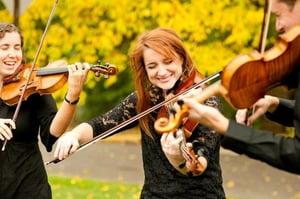 becoming more common, as are mandolin, banjo, and woodwinds. There has a been a great revival in the States over the last half century thanks to Irish groups like The Cheiftains taking to the international stage, influencing hollywood, rock music, and even the classical artists like Yo-Yo Ma.
becoming more common, as are mandolin, banjo, and woodwinds. There has a been a great revival in the States over the last half century thanks to Irish groups like The Cheiftains taking to the international stage, influencing hollywood, rock music, and even the classical artists like Yo-Yo Ma.
While I am not an expert Irish or Scottish fiddler (you will find much better resources in the books below), having taken the time to learn a handful of tunes and join in on sessions, I have really gained an appreciation for both the flair and subtlety of the style. There's more to just playing the notes - embellishments, bowings, rhythm, and ensemble awareness are all intrinsically different for this type of playing. In a way, you learn to make your violin sound more like pipes, flutes, and drums, and bit less like what your orchestra teacher or professor would have wanted... Though the notation looks simple, even incredibly advanced violinists will find themselves starting over from a crawl as they seek to master the technique and feel of Irish or Scottish fiddle. But don't let this intimidate you! I know some people who had never touched a violin and already sounded fantastic in only a year or two!
If you are looking to get started in Irish fiddle, but have only really 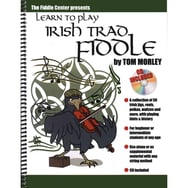 practiced in the classical style, there are some great method books that will teach you not only to play the notes of each tune, but also the style, often with audio tracks to really get you familiar. One such book is Tom Morley's Learn to Play Irish Trad Fiddle. Over the course of one book, you will learn 50 tunes and all the style you need to convince anyone that you've been playing sessions for years - with detailed instructions and an included CD, it's basically like taking private lessons from Tom Morley!
practiced in the classical style, there are some great method books that will teach you not only to play the notes of each tune, but also the style, often with audio tracks to really get you familiar. One such book is Tom Morley's Learn to Play Irish Trad Fiddle. Over the course of one book, you will learn 50 tunes and all the style you need to convince anyone that you've been playing sessions for years - with detailed instructions and an included CD, it's basically like taking private lessons from Tom Morley!
If you've already dabbled in Irish fidding, listen to it often, and are already an intermediately skilled player, sometimes a large collection of popular session tunes is all you need to start hammering out a tune each day or two. Check out 121 Favorite Irish Tunes with L.E. McCullough and the Irish Session Tunes by Brid Cranitch (The Orange Book, and The Blue Book), which both include a CD! Or, if you really want to get in the deep end, check out this anthology of over 1,800 tunes, O'Neill's Music of Ireland. Keep in mind that tunes are often played in slightly different fashions from one session group to another, so your listening and improvisation skills will take you beyond what these books can offer. Still, there's no better way to get started than simply sitting down at your stand with your instrument, some listening material, and a good printed collection of tunes!
It isn't uncommon for people to start learning violin simply because they 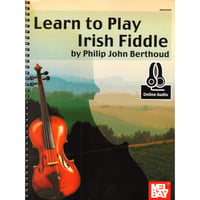 fell in love with Irish Fiddle. If you or someone you know has never even picked up a violin and wants to start playing session music, Learn to Play Irish Fiddle, by Philip John Berthoud, starts from the very beginning (how to hold the instrument) and progresses from there. Instead of including a CD, it contains an access code for online audio materials that will help you learn faster! While I don't personally condone learning a stringed instrument without an expert teacher's help, this or other books may keep you moving along when lesson opportunities are unavailable or few and far between.
fell in love with Irish Fiddle. If you or someone you know has never even picked up a violin and wants to start playing session music, Learn to Play Irish Fiddle, by Philip John Berthoud, starts from the very beginning (how to hold the instrument) and progresses from there. Instead of including a CD, it contains an access code for online audio materials that will help you learn faster! While I don't personally condone learning a stringed instrument without an expert teacher's help, this or other books may keep you moving along when lesson opportunities are unavailable or few and far between.
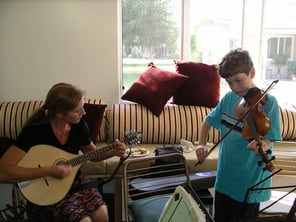
I hope that I may have at least stoked your interest in session music or motivated you to finally start memorizing more tunes. If you have anything to add, please comment below, share your advice or experience, or simply share this article with someone who may be interested! For a full catalog of all the Irish, Scottish, and Celtic sheet music SHAR offers, click the button below! You can sort the results by instrument, instrumentation, and difficulty level as well, making it easier to find the right book for you. Thanks for reading!



